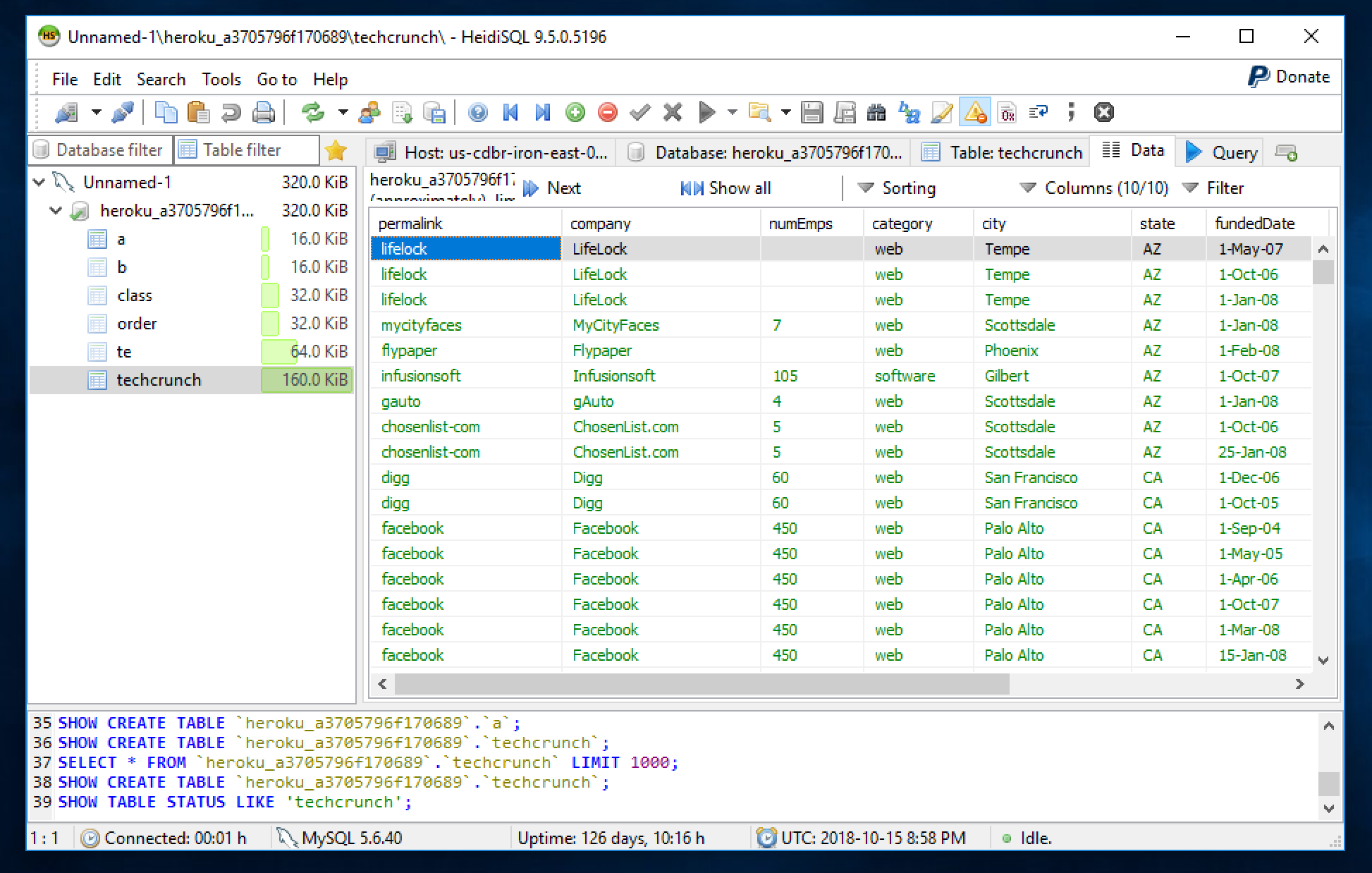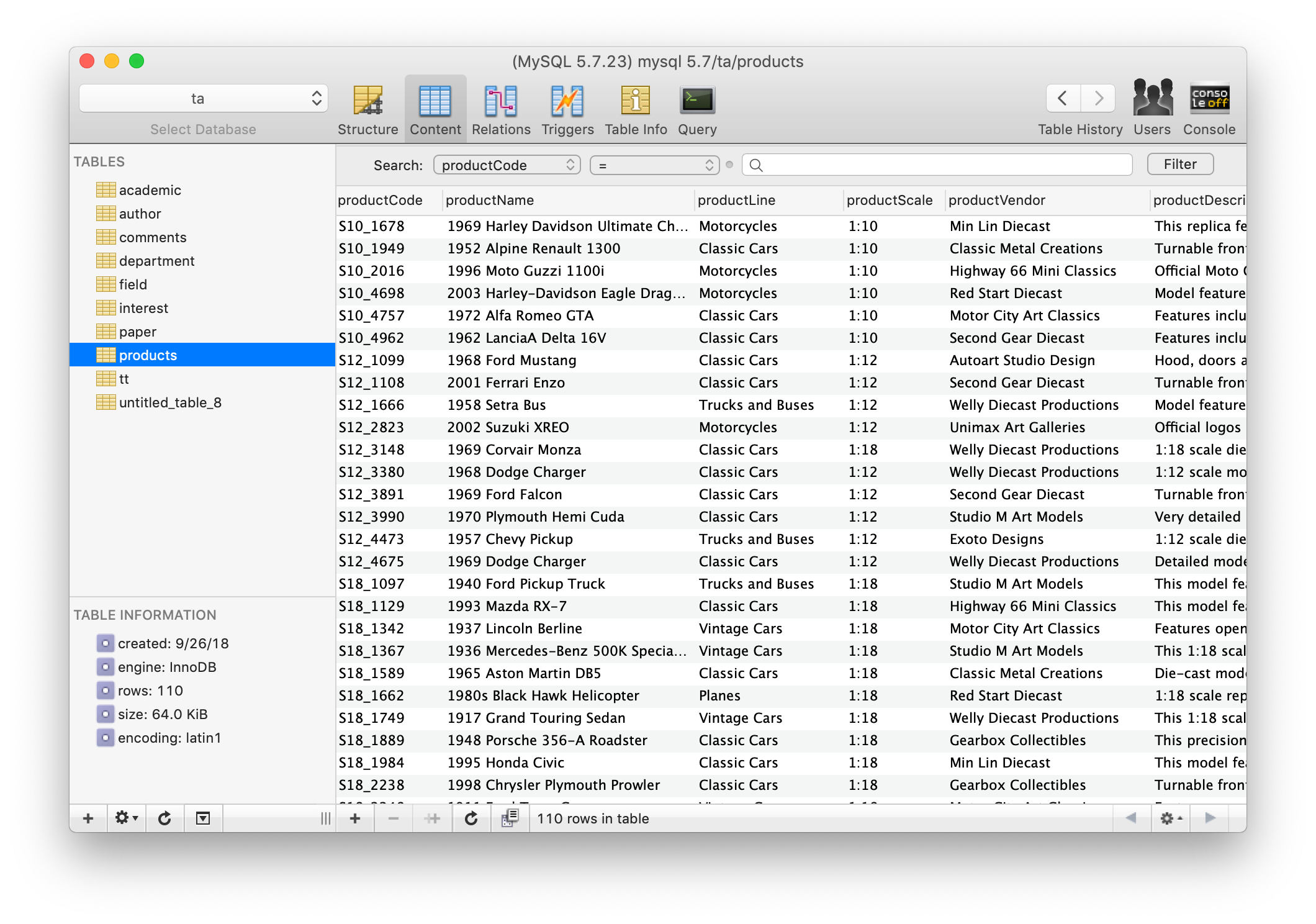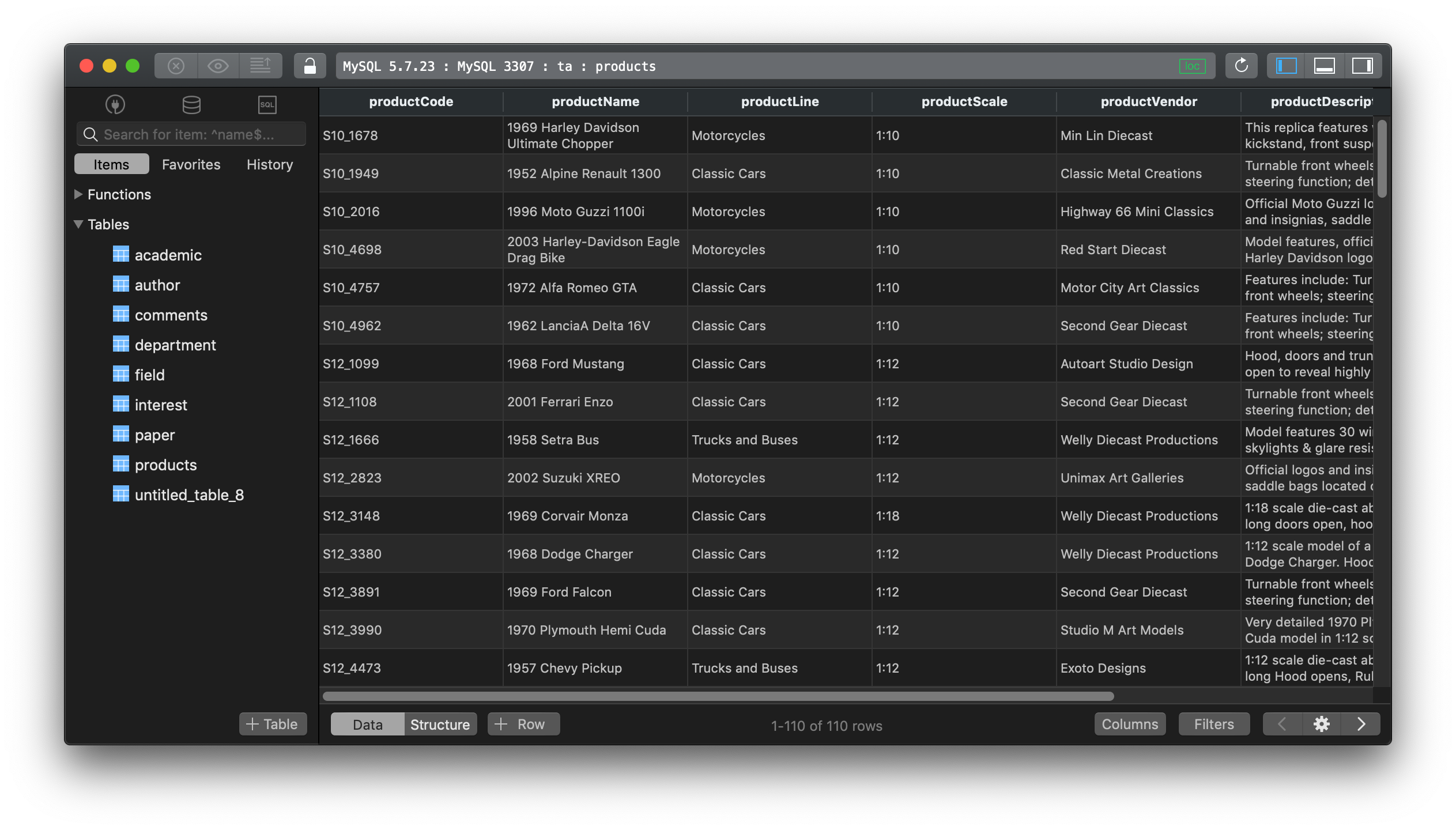HeidiSQL vs Sequel Pro vs TablePlus - A quick review
In this post, we are going to have a quick review of three MySQL database tools: HeidiSQL, Sequel Pro, TablePlus; and also compare the pros and cons of each tool.
1. HeidiSQL
HeidiSQL provides a powerful graphical interface for managing tables, logs, and users of a MySQL database, as well as Microsoft SQL Server and PostgreSQL on Windows.
-
Supported Platforms: HeidiSQL was built for the Windows platform, and it only works on Windows.
-
Supported Drivers: Initially, HeidiSQL offered support for MySQL, then extended to MS SQL Server, and now it also includes PostgreSQL support.
-
Pricing: HeidiSQL is a free and open-source client. Its codebase was originally taken from Ansgar Becker’s own MySQL-Front 2.5 software. Anyone can download and use the app for free with no limitation, but it also accepts the donation.

Pros:
- It’s lightweight.
- Connect to multiple servers in one window
- Free to use – Licensed under GNU GPL.
- Portable. Alongside the possibility of downloading the installer and source code, a portable version of the software is available.
- Full database user management and privileges management options.
- Write queries with customizable syntax-highlighting and code-completion
- Data synchronization. HeidiSQL can compare and synchronize your data and structure between local and remote databases.
- SSH tunneling support
Cons:
- Low stability. HeidiSQL is known to have a lot of bugs that result in frequent crashes
- It’s only available for Windows and it doesn’t look like a cross-platform is coming anytime soon
- No built-in debugger included
- Low DPI display. The author attempted to add the high DPI but dropped it eventually.
2. Sequel Pro
Sequel Pro had been long known for being one of the best GUI tools for MySQL, only until it started having compatibility issues with MySQL 8 and macOS Mojave.
-
Supported Platforms: Sequel Pro is available on macOS only.
-
Supported Drivers: Sequel Pro only supports MySQL. It works well with MySQL up to 5.7. Since the recent MySQL 8.0 came out, it’s reported that Sequel Pro can’t connect to MySQL 8.0, it’s not working properly or just crashing.
-
Pricing: Sequel Pro is free and open source. It also accepts donation.

Pros:
- Very clean and simple interface. It’s easy for newbies to get started.
- It runs fast.
- Easy to import/export databases.
- Connections over SSH
- Full user management, credentials, and roles
- Filtering/Sorting data based on single constraint including equal to/in/like/between etc.
- Sanity check or data integrity check.
- It’s free
Cons:
- Crashes very often and randomly. This is a big problem in the current (2016 to present) version of Sequel Pro.
- Available for Mac only. The development is stopped now.
3. TablePlus
With a native build and a lightweight size, TablePlus offers a fast and easy solution for managing multiple databases.
-
Supported platforms: TablePlus is built native for each platform. It started out with a native version for Mac, then another version for Windows, and a version for Linux was introduced recently as an alpha release. It also has an iOS version.
-
Supported Drivers: TablePlus supports a handful of relational databases: MySQL, PostgreSQL, SQLite, Microsoft SQL Server, Amazon Redshift, MariaDB, CockroachDB, Vertica, Oracle; and two popular NoSQL databases: Cassandra and Redis.
-
Pricing: TablePlus has a free version with full set of features which you can download and use forever, but there are some usage limitations. If you use it heavily, the license costs $59 to remove all those limitations.

Pros:
- Native build for each platform so it’s fast, lightweight, and stable.
- Clean and simple interface.
- Multiple drivers support
- Multiple conditions data filter
- Queries history and keyword binding favorite.
- Streaming results and async loading to show queries results faster and doesn’t block the UI.
- Very quick inline editing for table data and structure, you also can edit query results directly.
- Smart query editor with highlight syntax, instant autocomplete, SQL reformat.
- A plugin system to extend the app.
- Quick support. TablePlus releases new updates regularly and responds to users’ requests almost immediately.
Cons:
It currently lacks of some advanced features such as ER Diagram, database compare tool to Diff and Sync, etc.
4. Conclusion
Go with HeidiSQL if you:
- Prefer the old-fashioned design with loads of buttons in the UI.
- Work on Windows only
- Need a tool that is feature rich.
Go with Sequel Pro if you:
- Um. It’s dead. Just move on.
Go with TablePlus if you:
- Are a fan of native experience
- Work with multiple databases
- Want a modern design with better usability
- Want quick support & development cycle.